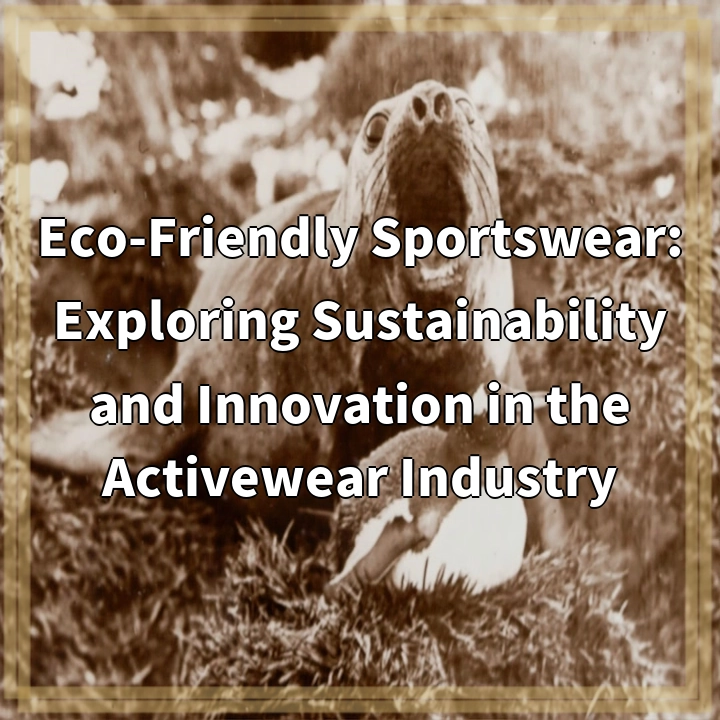
What is Eco-Friendly Sportswear?
Eco-friendly sportswear refers to activewear products and brands that prioritize sustainability and strive to minimize their environmental impact. It encompasses various aspects, such as the use of sustainable materials, ethical manufacturing processes, and innovative design approaches.
Real-World Problems Associated with Eco-Friendly Sportswear
1. Limited Availability
One of the challenges of eco-friendly sportswear is its limited availability in the market. Sustainable activewear options are still relatively niche compared to conventional sportswear brands. This makes it harder for consumers to find and purchase sustainable options.
2. Higher Price Points
Eco-friendly sportswear often comes with a higher price tag compared to conventional alternatives. This is primarily due to the use of sustainable materials, ethical manufacturing processes, and smaller production scales. The higher cost can be a deterrent for some consumers, preventing them from making sustainable choices.
3. Verification of Claims
With the rise in greenwashing, verifying the authenticity of eco-friendly sportswear claims can be challenging. Some brands may make sustainability claims without providing transparent information or proper certifications. This makes it difficult for consumers to make fully informed choices.
4. Performance and Durability
Sustainability efforts in sportswear sometimes face challenges in maintaining the same level of performance and durability as conventional options. Finding the right balance between sustainability and functionality can be a complex task for brands, as consumer expectations for performance remain high.
5. Waste and Recycling
The issue of waste and recycling is prominent in the sportswear industry. Polyester, a commonly used material in activewear, is derived from fossil fuels and does not easily decompose. Additionally, sportswear often incorporates different materials, making recycling and proper disposal a challenge.
6. Supply Chain Transparency
Ensuring transparency and ethical practices throughout the supply chain remains an ongoing challenge for eco-friendly sportswear. From raw material sourcing to manufacturing and distribution, it is essential for brands to have clear visibility and accountability at every stage.
By addressing these real-world problems, the activewear industry can make significant strides towards a more sustainable and environmentally-friendly future.

Solutions for Eco-Friendly Sportswear
Addressing the real-world problems associated with eco-friendly sportswear requires a multi-faceted approach. Here are some potential solutions:
1. Increased Awareness and Education
By raising awareness about the importance of sustainable sportswear and educating consumers about the environmental impacts of their purchasing decisions, more people can be encouraged to choose eco-friendly options.
2. Collaboration and Partnerships
Collaboration between sustainable brands, manufacturers, and retailers can help expand the availability of eco-friendly sportswear. Partnerships can also drive innovative solutions, such as developing new sustainable materials or implementing efficient recycling programs.
3. Government Regulations and Incentives
Government bodies can play a role by implementing regulations and incentives that encourage the production and consumption of sustainable sportswear. This can include tax incentives for eco-friendly brands, requirements for transparency in supply chains, or restrictions on harmful materials.
4. Improved Verification and Certification
Establishing reliable verification and certification processes for eco-friendly sportswear can help build consumer trust and prevent greenwashing. By ensuring clear labeling and standardized certifications, consumers can make more informed and confident choices.
5. Research and Innovation
Investing in research and development can drive innovation in sustainable materials, manufacturing processes, and recycling technologies. By continuously pushing the boundaries of what is possible, the industry can overcome challenges related to performance and durability.
6. Circular Economy Approach
Adopting a circular economy approach within the sportswear industry can minimize waste and encourage recycling. Brands can design products for durability and recyclability, implement take-back programs, and explore new methods for repurposing and upcycling materials.
By implementing these solutions, the sportswear industry can move towards a more sustainable future, where eco-friendly options are widely accessible, affordable, and aligned with consumer expectations for performance and durability.















